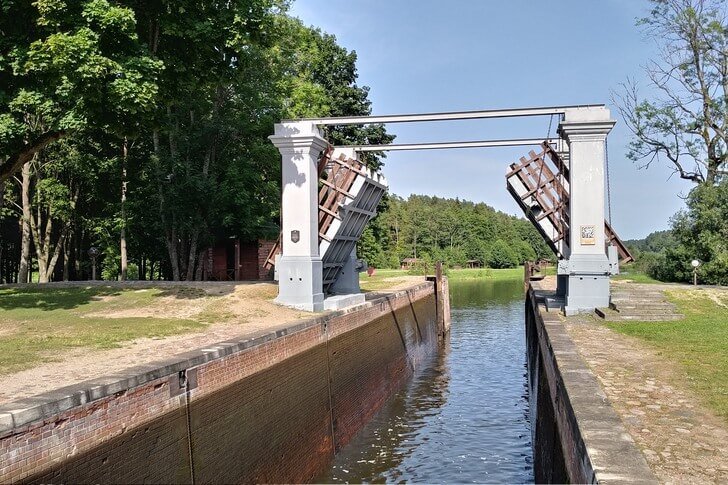Grodno stands on the border with Poland on the banks of the Neman. The city has been known since the 10th century as a center of crafts, trade and arts. The first thing that catches your eye here is the incredible number of temples built 300-400 years ago. Among them there are Catholic churches, Orthodox churches, a Lutheran church and a synagogue. There are also many monasteries in Grodno, which indicates the fact that there was a very active religious life in the city.
Of great interest are also civil buildings - mansions of statesmen from the time of the Commonwealth, fortresses, castles and city buildings. On the one hand, Grodno streets and squares have a typical look and architecture for Eastern Europe, on the other hand, they look quite well-groomed and modern, as if they were specially cleaned and restored for the arrival of tourists.
What to see and where to go in Grodno?
The most interesting and beautiful places for walking. Photos and a short description.
- Gilibert Park
- Soviet street
- Grodno Zoo
- Old lock
- New castle
- Cathedral of Saint Francis Xavier
- Catholic church and monastery of the Bernardines
- Catholic church and monastery of the Brigittes
- Church of Our Lady of Angels
- Nativity-Bogorodichny Monastery
- Borisoglebskaya Church
- Great Choral Synagogue
- Intercession Cathedral
- Lutheran church
- Grodno Drama Theater
- Grodno Regional Puppet Theater
- Museum of the History of Religion
- Grodno Cabinet of Curiosities
- Pharmacy Museum
- Museum of Maxim Bogdanovich
- House-Museum of Eliza Ozheshko
- Fire station tower
- Water towers Kasya and Basya
- Grodno fortress
- Augustow Canal
Gilibert Park
In the 18th century, the site of the park was the largest botanical garden in Europe, laid out by the French biologist J. E. Gilibert. The scientist arrived in Grodno at the invitation of the mayor and opened a medical academy. It was the first higher educational institution in Belarus. Thus, the history of the park began with a small apothecary garden, which grew into a full-fledged garden with hundreds of plants from around the world.

Soviet street
One of the oldest streets in the historical center of Grodno, about 500 meters long. Buildings of the 19th - early 20th centuries have been almost completely preserved here, there are even earlier buildings dating back to the 15th-17th centuries. Also on the street there are many entertainment and cultural institutions. A walk along the paving stones of Sovetskaya Street is an obligatory part of the tourist route in Grodno.

Grodno Zoo
The largest zoo in Belarus, for a long time - the only one in the country. It was founded in 1927 as a zoological department on the initiative of enthusiasts from the local society of nature lovers. By 1936, the number of animals increased to 400, among them were large exotic predators. During the Second World War, many inhabitants died, the rest were taken to Königsberg. Restoration began in 1945 with a pair of donkeys, deer and one peacock.

old lock
A defensive structure of the 11th century, built at a time when Grodno became part of the Grand Duchy of Lithuania. The remains of a 14th-century fortress built under Prince Vytautas, who turned the military bastion into a castle-residence, have survived to this day. In the 17th century the complex was destroyed by Russian troops, in the 18th century by the Swedes. Both times the castle was restored, but, nevertheless, it failed to preserve its original architectural appearance.
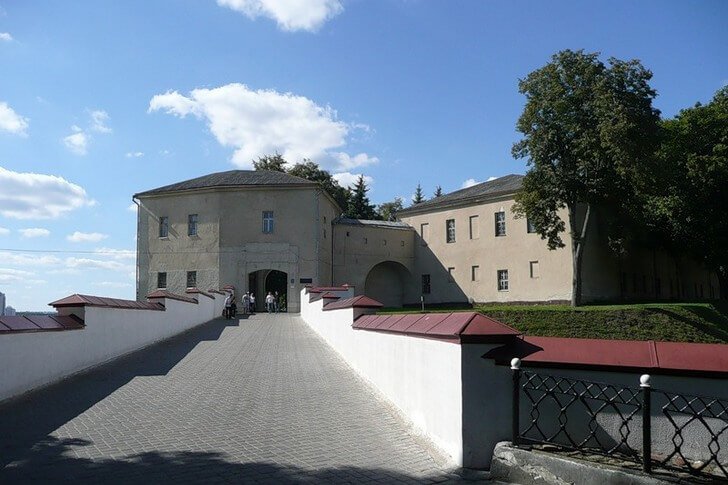
new castle
The Royal Palace of the 18th century, which served as the summer residence of the Lithuanian and Polish kings. It was built according to the project of K. F. Peppelman in the neoclassical style with elements of rococo. It was here that the historic agreement on the division of the Commonwealth between Russia and Prussia was signed, after which this state ceased to exist. The original building burned down in 1944 and was rebuilt in 1952.
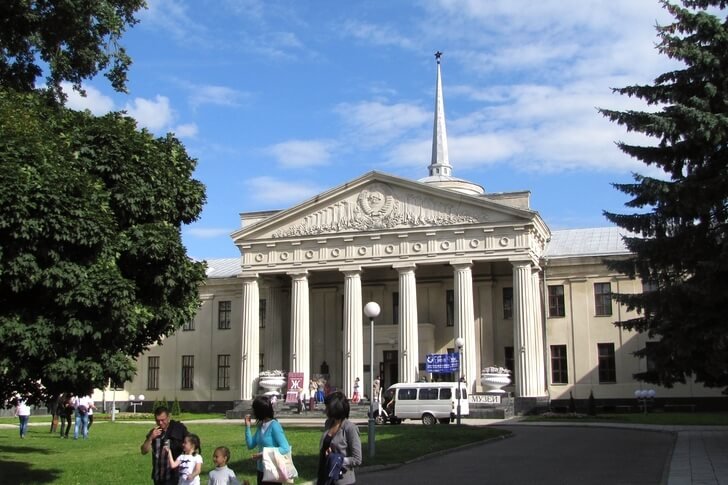
Cathedral of Saint Francis Xavier
The Catholic Cathedral, which has the status of a minor basilica. The building was built in the 17th century as part of a Jesuit monastery - one of the richest monasteries of the Commonwealth of that time. The prevailing architectural style of the building is baroque; plastic, painting and sculpture were generously used in the interior decoration. Many decorative elements of the interior are of great artistic value.

Catholic church and monastery of the Bernardines
The basilica of the 16th-17th centuries, which, as a result of numerous reconstructions, acquired the features of several styles: baroque, gothic and renaissance. The interior of the church has retained its unique three-hundred-year-old appearance; the organ of the 17th century is of particular value. The building is perfectly preserved, despite the fact that in Soviet times it fell into some desolation. At the moment the church is active.
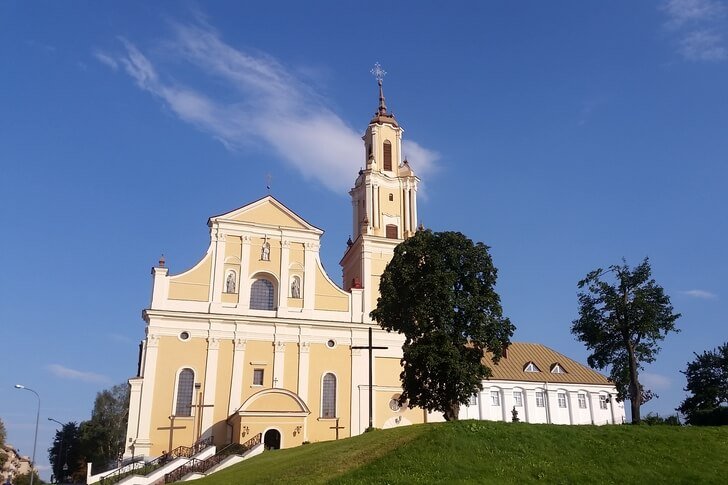
Catholic church and monastery of the Brigittes
The ensemble is considered an architectural monument of the early Baroque. It was built in the first half of the 17th century at the expense of K. Veselovsky, a statesman of the Grand Duchy of Lithuania. The decline of the monastery began in the 19th century, as a result of which, by the beginning of the 20th century, almost all the nuns left it. In Soviet times, a medical facility was located here, in 1990 the complex was returned to the Catholics.
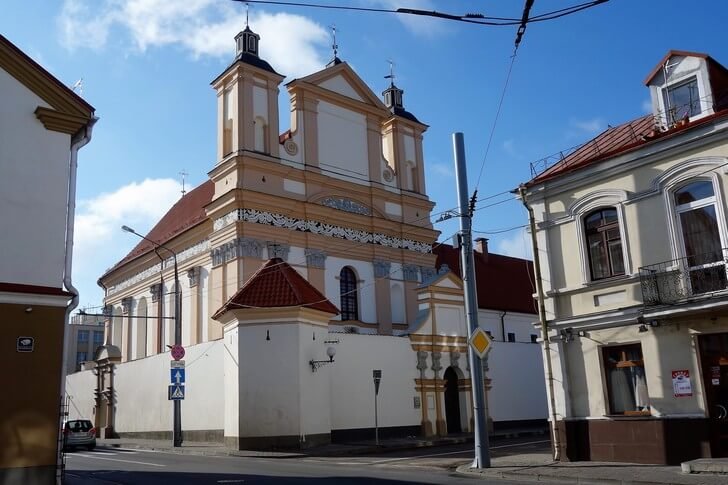
Church of Our Lady of Angels
The current Catholic monastery, founded in 1635. Initially, all the buildings were made of wood, in 1660 the construction of a stone church in the Baroque style began. In the period 1863-1919, the monastery was used as a prison for Polish clergy, and later functioned as a Franciscan monastery. At the moment, the complex is in operation - novices and monks live in it.

Nativity-Bogorodichny Monastery
An Orthodox monastery, which until the middle of the 19th century (before the transition of Grodno under the protectorate of the Russian Empire) was Catholic. To organize monastic life, the abbesses and novices from the Orsha Monastery moved here. The institution existed until the 1960s, after which it was closed. Monastic life resumed in the 1990s, while the dilapidated buildings began to be restored.
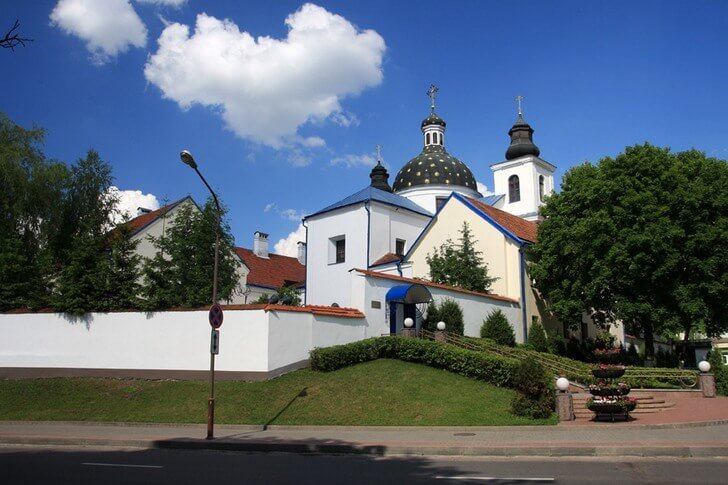
Borisoglebskaya Church
The temple is located on the banks of the Neman. It is a rare monument of the period of Ancient Rus', preserved on the territory of Western Belarus. Presumably, the building was erected in the 12th century and consecrated in honor of Princes Boris and Gleb. Already by the 16th century, the church fell into decay as a result of frequent raids by the crusaders and the reign of the Catholic branch of Christianity in this area. Currently, despite its emergency condition, the temple is functioning.
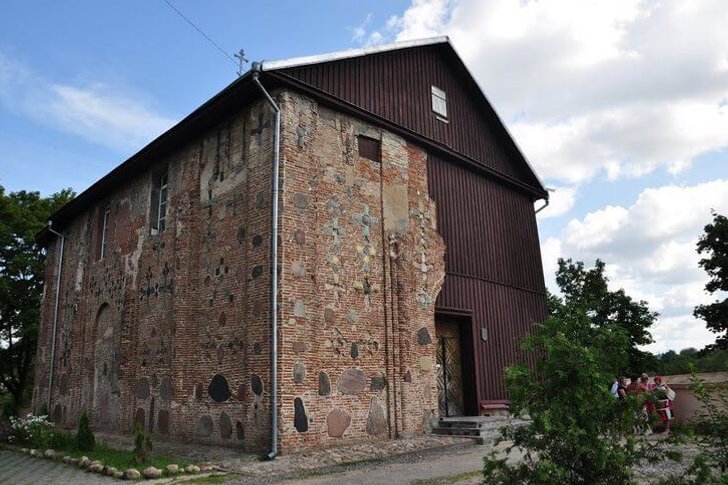
Great Choral Synagogue
The first Jewish temple in Grodno was built in the 16th century according to the project of S. Gucci, but the building burned down in 1617. The same fate befell the next building. The modern and third synagogue was built according to the project of I. Frunkin in 1905 in an eclectic manner with predominant Moorish elements. During the Second World War, the rich interior decor was badly damaged, which in the 1990s began to be actively restored.
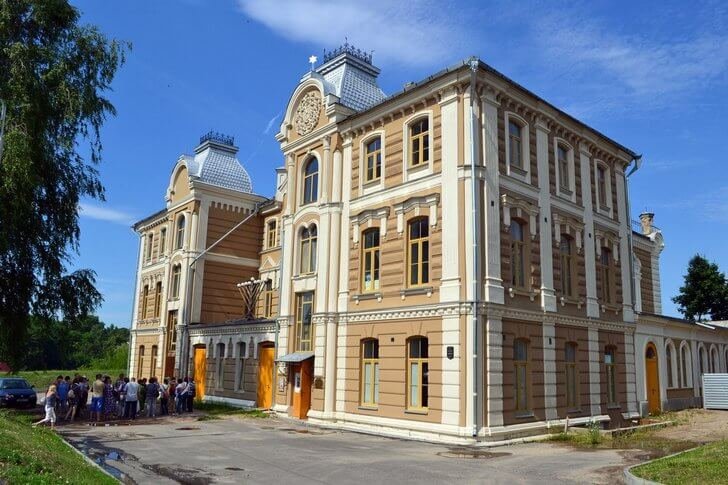
Intercession Cathedral
Orthodox church of the beginning of the 20th century, built in the retrospective Russian style according to the project of M. M. Prozorov. The cathedral was dedicated to the memory of those killed in the Battle of Tsushima and in the Battle of Port Arthur. Unlike other religious institutions, it worked continuously both during the years of the German occupation and during the persecution of religion in the Soviet period. In the 2000s, on the eve of the 100th anniversary, the complex was thoroughly restored.

lutheran church
The only Protestant church in Grodno that is currently operating. It was built at the expense of the wealthy German community in the middle of the 19th century. In 1912, the first reconstruction was carried out. After the majority of Germans left Grodno following the results of two World Wars, the church stood in desolation until the authorities adapted it for storage. In 1995, the building was handed over to the resurgent Lutheran community.

Grodno Drama Theater
The building of the dramatic stage is an original architectural monument that immediately attracts interested eyes. It was built in the 1980s from reinforced concrete structures and bricks. The shape of the building resembles an inverted crown. Nowhere else in Grodno and the surrounding cities are such buildings found. G. Mochulsky worked on an unusual project.

Grodno Regional Puppet Theater
The puppet theater is the oldest stage in Belarus. It is housed in an 18th-century building and is surrounded by the Gilibert Park. The building has been used as a theater stage since the beginning of the 19th century. Over the following decades, it was reconstructed several times in order to accommodate performances and accommodate a sufficient number of spectators. The puppet theater has been here since the 1980s.
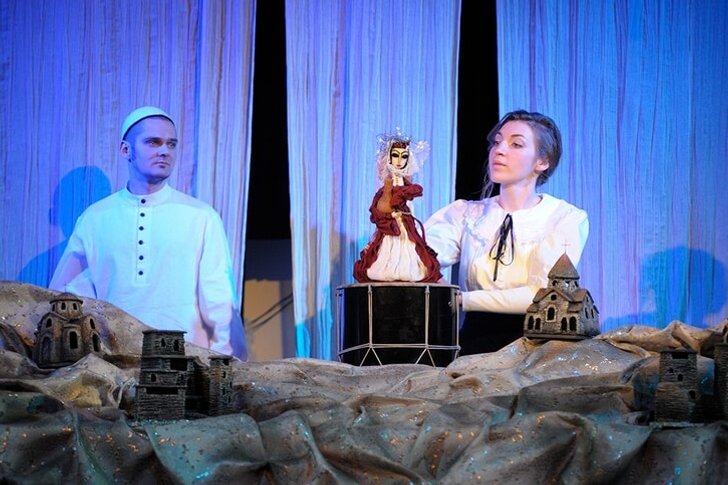
Museum of the History of Religion
The collection was founded in 1977, but then it was called the Republican Museum of Atheism and the History of Religion. Initially, the exposition was located in a convent, but after the return of the church building, the exhibits were moved to the palace of Karol Khreptovich, a Baroque mansion of the middle of the 18th century. In the halls of the museum you can see a historical retrospective of all religions that existed on the territory of Belarus.

Grodno Cabinet of Curiosities
The Kunstkamera in Grodno opened in 2012; exhibits for it were collected almost throughout the entire 20th century. Today it would be impossible to implement, given the current level of development of medicine. The collection is housed in an 18th-century building that once housed the gallery of King Augustus II. The exposition is located in two halls: normal and pathological anatomy. Examples of exhibits: lungs of a smoker, liver of an alcoholic, embryos with pathologies.

Pharmacy Museum
The oldest pharmacy in Belarus, opened in 1709 at a Jesuit monastery and successfully operated until the 1950s. There is a version that the institution has been operating since 1687. The museum exposition is located in three halls, where you can learn about the history of the development of the pharmaceutical business for hundreds of years. But, nevertheless, most of the items belong to the XIX-XX centuries.
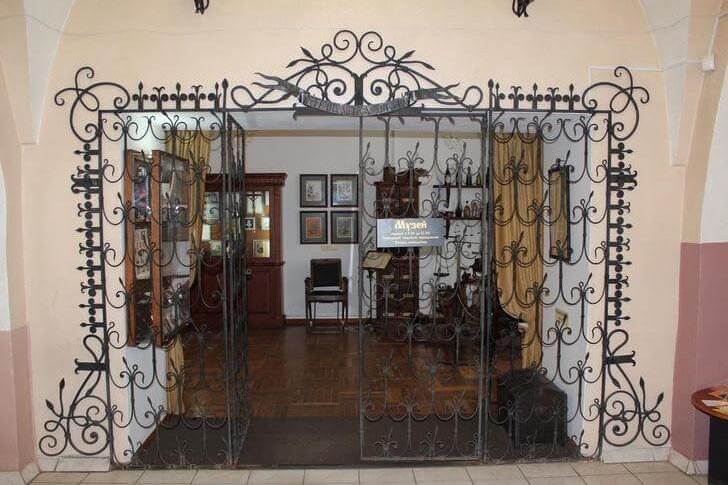
Museum of Maxim Bogdanovich
M. A. Bogdanovich is a Belarusian classical poet. He was born in Minsk and lived in Grodno with his parents in the period 1892-1896. The museum on the territory of the Bogdanovich house was organized in 1986. The opening of the exposition was preceded by painstaking work: the reconstruction of interiors, the collection of things belonging to the family and archival documents. By 1995, the collection included more than 13,000 items.

House-Museum of Eliza Ozheshko
The Belarusian writer Eliza Ozheshko has gained popularity not only in her country - her work is highly valued in Poland. The museum named after her is located in the house, which is an exact copy of the building where Eliza lived until her death in 1910. The museum opened in 1958, in 1976 it was decided to completely dismantle the dilapidated building and build a new one.

fire station tower
The fire station and tower were built at the end of the 19th century after a devastating fire that killed 600 houses. After the tragedy, residents decided that it was better to spend money once than to suffer from possible fires in the future. The tower is a building of six tiers, made of brick. It is adjacent to the rectangular depot building. The last floor of the tower serves as an observation post, where a spiral staircase leads.

Water towers "Kasya" and "Basya"
Two towers 20 meters high, monuments of industrial architecture of the 19th - early 20th centuries. Nowadays they house art workshops. There are similar structures in many cities of Russia and Belarus, but it is in Grodno that two towers are located nearby, which was due to the peculiarities of the water supply system. During the reconstruction, one tower was repainted in soft pink, the other in beige.
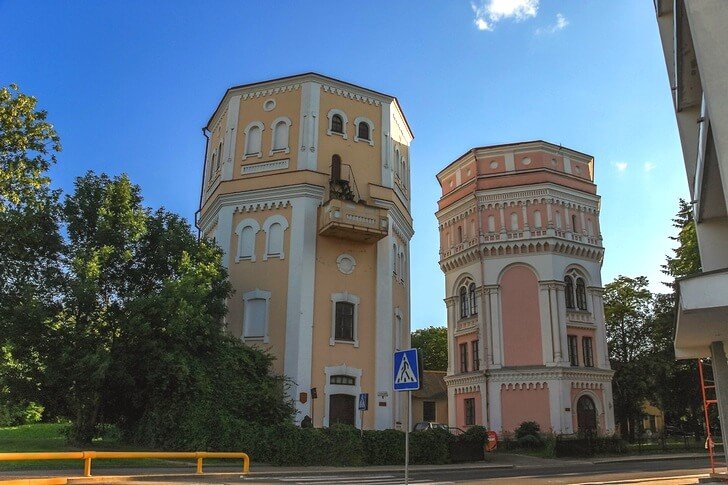
Grodno fortress
The system of fortifications that took shape during the 12th - 20th centuries. At various times, it belonged to the German and Russian empires, as well as the Polish Republic. The fortress did not lose its military significance until the end of World War II, as a result of which it was badly damaged. Several forts, cellars and observation posts have survived to this day.

Augustow Canal
A navigable canal with a length of more than 100 km, connecting the Vistula with the Neman and located on the territory of Belarus and Poland. It is located in a specially protected area, placed under the protection of UNESCO, and is a monument of engineering architecture. For tourism purposes, it was used from the 1920s until the outbreak of World War II. A repeated surge of interest in this place occurred at the end of the 20th century.
